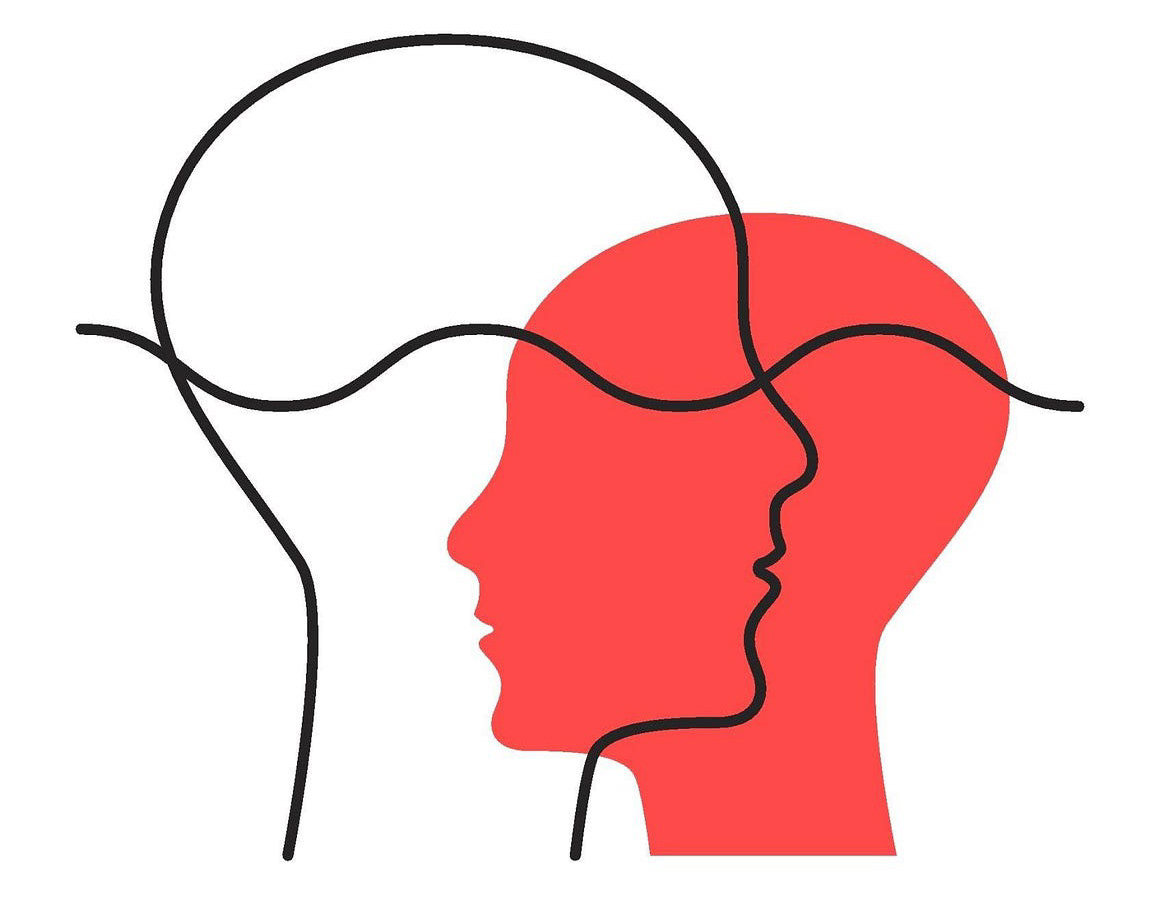Understanding the psychology of color allows us to wield this powerful tool to enhance user experiences and create meaningful connections. In this blog, we delve into the fascinating world of color psychology, exploring how different colors impact emotions and behaviors and how we can strategically use them to elevate user experience.
Here, we'll explore some common colors and their associated emotional responses:
1. Blue:
Blue is often associated with feelings of tranquility, trust, and reliability. It has a calming effect on the mind and body, making it a popular choice for interfaces in industries such as finance, technology, and healthcare. The color blue is thought to lower blood pressure and reduce stress, which can positively impact user engagement and encourage a sense of security.
Blue is often associated with feelings of tranquility, trust, and reliability. It has a calming effect on the mind and body, making it a popular choice for interfaces in industries such as finance, technology, and healthcare. The color blue is thought to lower blood pressure and reduce stress, which can positively impact user engagement and encourage a sense of security.
2. Red:
Red is a color that elicits strong emotions, often associated with passion, urgency, and excitement. It can stimulate appetite and increase heart rate, making it an ideal choice for calls to action or highlighting important elements in an interface. However, too much red can be overwhelming and may lead to feelings of stress or agitation.
Red is a color that elicits strong emotions, often associated with passion, urgency, and excitement. It can stimulate appetite and increase heart rate, making it an ideal choice for calls to action or highlighting important elements in an interface. However, too much red can be overwhelming and may lead to feelings of stress or agitation.
3. Green:
Green is the color of nature and growth, symbolizing harmony and balance. It is often used in eco-friendly and health-related applications to evoke feelings of well-being and positivity. Green can also be associated with money and financial success, making it suitable for financial and investment platforms.
Green is the color of nature and growth, symbolizing harmony and balance. It is often used in eco-friendly and health-related applications to evoke feelings of well-being and positivity. Green can also be associated with money and financial success, making it suitable for financial and investment platforms.
4. Yellow:
Yellow is a bright and energetic color that is commonly associated with happiness, optimism, and warmth. When used sparingly, yellow can add a cheerful touch to an interface and draw attention to specific elements. However, excessive use of yellow may cause visual fatigue and lead to feelings of irritation.
Yellow is a bright and energetic color that is commonly associated with happiness, optimism, and warmth. When used sparingly, yellow can add a cheerful touch to an interface and draw attention to specific elements. However, excessive use of yellow may cause visual fatigue and lead to feelings of irritation.
5. Purple:
Purple is often linked to luxury, sophistication, and creativity. It has a regal quality and is used in interfaces for high-end products or services. As a color that balances the energy of red and the calmness of blue, purple can create a sense of intrigue and mystery.
Purple is often linked to luxury, sophistication, and creativity. It has a regal quality and is used in interfaces for high-end products or services. As a color that balances the energy of red and the calmness of blue, purple can create a sense of intrigue and mystery.
6. Orange:
Orange is a vibrant and friendly color that exudes energy and enthusiasm. It is often associated with innovation and creativity and can be used to create a sense of excitement and stimulation. However, like yellow, it should be used thoughtfully to avoid overwhelming users.
Orange is a vibrant and friendly color that exudes energy and enthusiasm. It is often associated with innovation and creativity and can be used to create a sense of excitement and stimulation. However, like yellow, it should be used thoughtfully to avoid overwhelming users.
7. Pink:
Pink is often linked to feelings of compassion, nurturing, and sweetness. It is a color commonly associated with femininity and can evoke a sense of romance and tenderness. In UX design, pink may be used in applications or products targeted towards younger audiences or to convey a softer and more delicate tone.
Pink is often linked to feelings of compassion, nurturing, and sweetness. It is a color commonly associated with femininity and can evoke a sense of romance and tenderness. In UX design, pink may be used in applications or products targeted towards younger audiences or to convey a softer and more delicate tone.
8. Brown:
Brown is a warm and earthy color that symbolizes stability, reliability, and simplicity. It can be used to create a rustic or natural aesthetic, making it suitable for applications related to outdoor activities, organic products, or eco-friendly services.
Brown is a warm and earthy color that symbolizes stability, reliability, and simplicity. It can be used to create a rustic or natural aesthetic, making it suitable for applications related to outdoor activities, organic products, or eco-friendly services.
9. Gray:
Gray is a neutral color that represents practicality, sophistication, and balance. It can serve as a versatile backdrop for other colors and helps create a sense of elegance and professionalism. However, too much gray may evoke feelings of monotony or dullness, so it's essential to pair it with more vibrant colors to maintain engagement.
Gray is a neutral color that represents practicality, sophistication, and balance. It can serve as a versatile backdrop for other colors and helps create a sense of elegance and professionalism. However, too much gray may evoke feelings of monotony or dullness, so it's essential to pair it with more vibrant colors to maintain engagement.
10. Black:
Black is a color of power, elegance, and formality. It exudes a sense of authority and is often used in luxury products or services. However, an overuse of black can create a somber or intimidating atmosphere, so it should be balanced with other colors to avoid overwhelming users.
Black is a color of power, elegance, and formality. It exudes a sense of authority and is often used in luxury products or services. However, an overuse of black can create a somber or intimidating atmosphere, so it should be balanced with other colors to avoid overwhelming users.
11. White:
White is a symbol of purity, cleanliness, and simplicity. It provides a clean and minimalist backdrop for interfaces and is often used in technology and healthcare applications to create a sense of cleanliness and professionalism.
White is a symbol of purity, cleanliness, and simplicity. It provides a clean and minimalist backdrop for interfaces and is often used in technology and healthcare applications to create a sense of cleanliness and professionalism.
12. Turquoise:
Turquoise is a refreshing and calming color that combines the tranquility of blue with the invigorating qualities of green. It can evoke feelings of balance, creativity, and open-mindedness. Turquoise is well-suited for applications related to self-improvement, personal growth, or creative pursuits.
Turquoise is a refreshing and calming color that combines the tranquility of blue with the invigorating qualities of green. It can evoke feelings of balance, creativity, and open-mindedness. Turquoise is well-suited for applications related to self-improvement, personal growth, or creative pursuits.
13. Gold:
Gold is a color associated with luxury, wealth, and prosperity. It can create a sense of opulence and prestige, making it suitable for high-end products or services. Gold accents can add a touch of elegance and refinement to an interface.
Gold is a color associated with luxury, wealth, and prosperity. It can create a sense of opulence and prestige, making it suitable for high-end products or services. Gold accents can add a touch of elegance and refinement to an interface.
14. Silver:
Silver is a color that represents modernity, technology, and sophistication. It can create a futuristic and high-tech vibe, making it appropriate for interfaces in the tech industry or electronic devices.
Silver is a color that represents modernity, technology, and sophistication. It can create a futuristic and high-tech vibe, making it appropriate for interfaces in the tech industry or electronic devices.
15. Coral:
Coral is a warm and energetic color that combines elements of orange and pink. It can evoke feelings of enthusiasm, joy, and playfulness. Coral is often used in fashion, beauty, or lifestyle applications to create a lively and fun atmosphere.
Coral is a warm and energetic color that combines elements of orange and pink. It can evoke feelings of enthusiasm, joy, and playfulness. Coral is often used in fashion, beauty, or lifestyle applications to create a lively and fun atmosphere.
Remember, while these are general associations, individual perceptions of colors can vary based on personal experiences and cultural backgrounds. Therefore, user testing and feedback collection are essential to ensure that the chosen color schemes align with the desired emotional responses across diverse user groups. By leveraging the psychology of color in UX design, designers can create more engaging and emotionally impactful experiences that resonate with users and foster a strong connection with the product or service.
Understanding Color Combinations: Incorporating a single color effectively is essential, but understanding color combinations is equally vital in UX design. A well-constructed color palette can guide users through an interface, highlight important elements, and create a harmonious visual experience. Complementary colors (those opposite each other on the color wheel) can create a sense of balance, while analogous colors (adjacent on the color wheel) can provide a feeling of unity. However, it's crucial to maintain a balanced contrast to ensure readability and accessibility for all users, including those with visual impairments.
Considering Cultural and Contextual Factors: Cultural background plays a significant role in color perception. For example, while white symbolizes purity in Western cultures, it represents mourning in some Eastern cultures. As UX designers, we need to consider our target audience's cultural backgrounds and preferences when choosing color palettes. Moreover, the context in which the application or product will be used must also be taken into account. For instance, a meditation app might use different colors from a sports-related app, reflecting the intended emotional states and user activities.
Color Responsibly: Avoiding Negative Associations While colors can evoke positive emotions, they can also have negative connotations or create unintended reactions. Some colors might induce stress or anxiety, leading to a negative user experience. Moreover, overly saturated colors or clashing color combinations can overwhelm users and detract from the intended message. To avoid these pitfalls, UX designers must test color choices and gather feedback from diverse user groups to ensure that the selected colors align with the intended emotions and user behaviors.
Summary: Color psychology is an intricate and fascinating aspect of UX design, with the potential to influence user emotions and behaviors significantly. As UX designers, we must recognize the power of colors and use them strategically to enhance user experiences. By understanding the emotions associated with various colors, considering cultural and contextual factors, and designing with accessibility in mind, we can create interfaces that not only captivate users visually but also engage them emotionally and foster meaningful connections with our products. Remember, color is a tool that should be wielded with care and consideration to create exceptional user experiences.
As UX designers, we are the architects of user experience, and color is one of our most powerful tools to shape that experience. By harnessing the psychology of color, we can create interfaces that resonate with users on a deep emotional level, making them more likely to engage with our products and achieve their goals.
However, it's essential to remember that color is just one piece of the UX puzzle. A holistic approach to design, considering all aspects of user experience, will lead to the most impactful results. Usability, functionality, and accessibility must work in harmony with color choices to create a seamless and delightful experience for all users.
Here are some key takeaways to consider when leveraging the psychology of color in UX design:
1. Understand your audience: Research your target users' preferences and cultural backgrounds to ensure your color choices align with their expectations and emotions.
2. Test and iterate: Conduct user testing to gauge the emotional responses elicited by different color combinations. Iterate your designs based on feedback to refine the user experience continually.
3. Maintain accessibility: Ensure that your color choices are accessible to users with visual impairments by providing sufficient contrast and considering alternative ways to convey information.
4. Balance aesthetics and functionality: While aesthetics are crucial, don't compromise functionality for the sake of visual appeal. The user experience should remain the primary focus.
5. Be intentional with color usage: Every color you include in your design should have a purpose and align with the overall user experience goals.
6. Stay consistent: Create a cohesive color palette throughout the interface to build a strong brand identity and enhance user recognition.
In conclusion, the psychology of color is an exciting and ever-evolving aspect of UX design. By embracing its influence and using it strategically, we can craft experiences that leave a lasting impact on users and drive positive behaviors. As we continue to explore the intricacies of color psychology, let's remember that our ultimate goal is to create memorable and delightful user experiences that empower and enrich the lives of the people who use our products.
So, the next time you sit down to design an interface, think beyond just the aesthetics and dive into the captivating world of color psychology. With a thoughtful and strategic approach to color, you'll be well on your way to crafting exceptional user experiences that resonate with your audience and leave a lasting impression. Happy designing!






